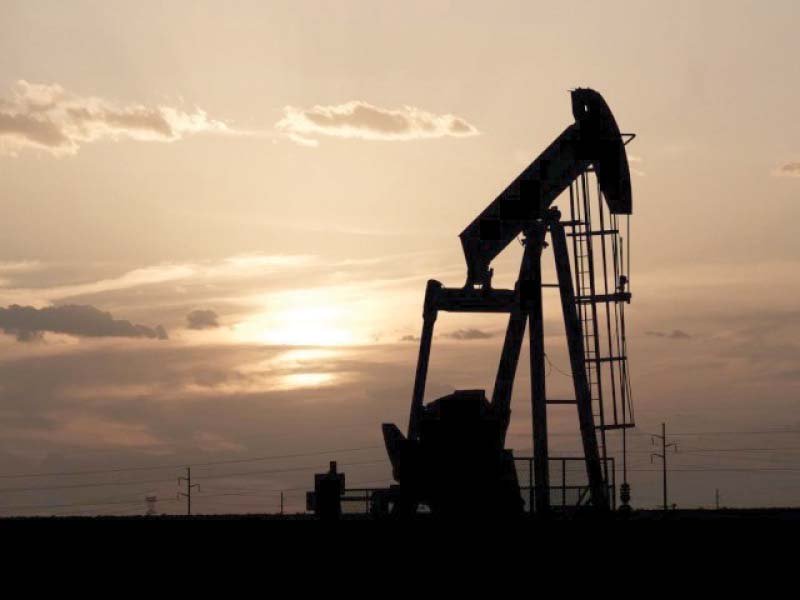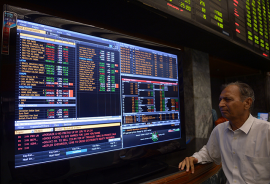
The underutilisation of the facility has put some additional burden on official foreign exchange reserves, which the State Bank of Pakistan (SBP) had managed to build through hot foreign money inflows.
As against the $3.2 billion facility, we expect that the actual utilisation will remain around $890 million, according to sources in the Ministry of Finance. A recent publication of the economic affairs ministry put the utilisation at only $768 million during July-April period of this fiscal year.
But the spokesman of the Petroleum Division, Sajid Qazi, said that the slump in crude oil prices coupled with low demand impacted the facility, hoping that the figures will improve once things return to normalcy.
The $3.2 billion Saudi oil facility was part of $6.2 billion Saudi Arabian package that the kingdom had announced in November 2018 to ease Pakistan’s external sector woes. Prime Minister Imran Khan had twice flown to Saudi Arabia to secure the deal - a journey his close aide Raza Dawood had once described as “awful”.
The facility that had been secured after hectic backdoor lobbying with the royal family not only remains underutilised in this fiscal year but budget estimates suggest that the government will not be able to utilise more than $1 billion in fiscal year 2020-21 starting from July.
The Saudi facility faced roadblocks since the beginning. Initially, both the countries had a plan to make the facility operational from January 2019. But it actually became operational from July last year.
The United Arab Emirates (UAE) had also announced a $6.2 billion package for Pakistan in December 2018, including $3.2 billion oil facility. But later on, the UAE reduced its financial assistance to $2 billion and also shelved the plan to give $3.2 billion oil facility on deferred payments.
The UAE and Saudi Arabian oil credit facilities were part of the $14.5-billion package agreed with three friendly countries, including China. After coming into power, the Pakistan Tehreek-e-Insaf (PTI) government faced an immediate challenge of filling a $12 billion hole, which the Pakistan Muslim League-Nawaz (PML-N) government had left behind due to a widening current account deficit.
Petroleum Division version
The SDF is spread over a period of time and It’s possible that utilisation of the Fund is reduced in a particular period, said Sajid Qazi.
The lower utilisation of the facility can be because of recent crude cargo cancellations and price impact as the refineries went on low throughput, said the spokesman.
He added, “Lower throughput of refineries (Parco and NRL) from July-December due to low demand and furnace oil upliftment, Parco turnaround so only one cargo during January & February period arrived.”
“There was also lower demand due to Covid-19 lockdown and lower prices from January onwards led to underutilisation of the facility.”
The Saudi facility is for an extended period so it is possible that due to the above reasons the utilisation is currently low but it can go up once the crude price increases, he added.
Under the agreement, the Pak-Arab Refinery Company (Parco) and the National Refinery Limited (NRL) would procure crude oil from Saudi Aramco Product Trading Company. Similarly, Pakistan State Oil (PSO) and Pakistan LNG Limited (PLL) would procure petroleum products and LNG from the Saudi company respectively.
The Ministry of Finance’s response was awaited till the filing of the story. Pakistan arranged $3 billion cash from Saudi Arabia at 3.2% interest rate. The UAE cash support had been secured for a period of two years at an interest rate of 3%, according to a written reply that then then Finance Minister Asad Umar had submitted in the Senate.
In May last year, Adviser to Prime Minister on Finance Dr Abdul Hafeez Shaikh had announced through his twitter handle that “from 1st July 2019 KSA is activating the deferred payment for petroleum products facility of $275 million per month amounting to $3.2 billion per year for 3 years”.
The two countries inked a financing agreement for the import of petroleum products, crude oil and LNG on February 17, 2019 during the Saudi crown prince’s Islamabad visit.
Pakistan’s gross official foreign currency reserves are again under pressure after $3 billion worth of outbound flight of hot foreign money and delay in release of loan tranches by the World Bank. The finance ministry and SBP’s decision to drop issuance of $3 billion Eurobond also impacted the gross official reserves.
The exports were also impacted by the outbreak of the coronavirus disease but the country also gained from reduction in imports.
The reserves have slipped to $10.1 billion as of end of last week - hardly a billion dollar above November 2018 level when Pakistan was struggling to secure financial bailout packages.
Pakistan will have to make roughly $800 million foreign loan repayments in the last week of June and $1.5 billion fresh facilities from the Asian Development Bank and the World Bank are likely to keep the reserves at their current levels. The rupee-dollar parity has once again come under pressure and the rupee closed at Rs166.63 to a dollar in the inter-bank on Friday, according to the SBP.
The external sector pressures are emanating despite Pakistan’s current account deficit narrowed down to $3.3 billion in the first 11 months as against $11.5 billion in the same period of the last fiscal year.
The IMF programme also remains technically suspended and its restoration hinges upon the approval of the budget from the parliament to the satisfaction of the Fund and amendments in the NEPRA Act to impose new electricity surcharges on the consumers. Imposing surcharges would mean passing on the cost of the government inefficiencies onto the consumers.
Published in The Express Tribune, June 21st, 2020.
Like Business on Facebook, follow @TribuneBiz on Twitter to stay informed and join in the conversation.



1725030039-0/Untitled-design-(2)1725030039-0-165x106.webp)
1725366721-0/kyle-(1)1725366721-0-165x106.webp)



1732084432-0/Untitled-design-(63)1732084432-0-270x192.webp)








COMMENTS
Comments are moderated and generally will be posted if they are on-topic and not abusive.
For more information, please see our Comments FAQ